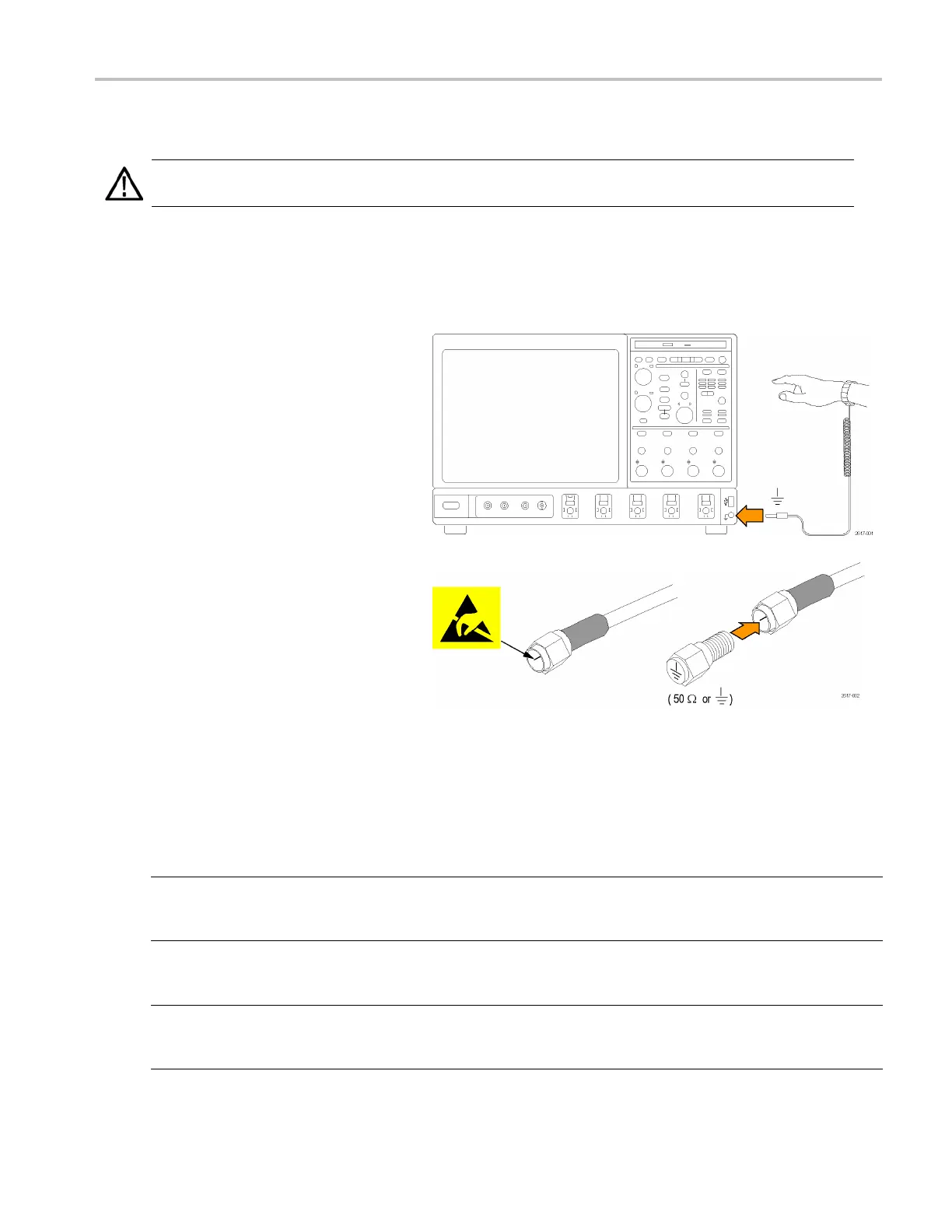Install Your Ins
trument
Preventing ESD
CAUTION. Adir
ect electrostatic discharge can damage the i nstr ument input. To learn how to avoid this damage, read
the following information.
Electrostatic discharge (ESD) is a concern w hen handling any electronic equipment. The instrument is designed with
robust ESD protectio
n, however it is still possible that large discharges of static electricity directly into the signal input
may damage the instrument. To avoid damage to the instrument, use the following techniques to prevent electrostatic
discharge to the instrument.
1. Dis charge the static voltage from your
body by wearing a grounded antistatic
wrist strap while connecting and
disconnecting cables and TekConnect
adapters. The instrument provides a
front panel connection for this purpose.
2. A cable that is left unconnected on
a bench can develop a large static
charge. Discharge the static voltage
from all cables before connecting them
to the instrument or device under test
by momentarily grounding the center
conductor of the cable, or by connecting
a50Ω termination to one end, before
attaching the cable to the instrument.
Powering On the Instrument
Power supply requirements
Source voltage and frequency Power consum ption
MSO70000/C, DSA70000B/C, and DPO70000B /C Series:
100–240 V
RMS
±10%, 50–60 Hz
or 115 V
RMS
±10%, 400 Hz. CAT II
≤1100 VA
DPO7000 Series:
100–240 V
RMS
±10%, 47–63 Hz
or 115 V
RMS
±10%, 400 Hz
550 Watts maximum
MSO5000 and DPO5000 Series:
100–240 V
RMS
±10% 50–60 Hz
115V440Hz
275 Watts maximum
MSO70000/C, DPO/DSA70000B/C, DPO7000, and MSO/DP O5000 Series U ser M anual 5

